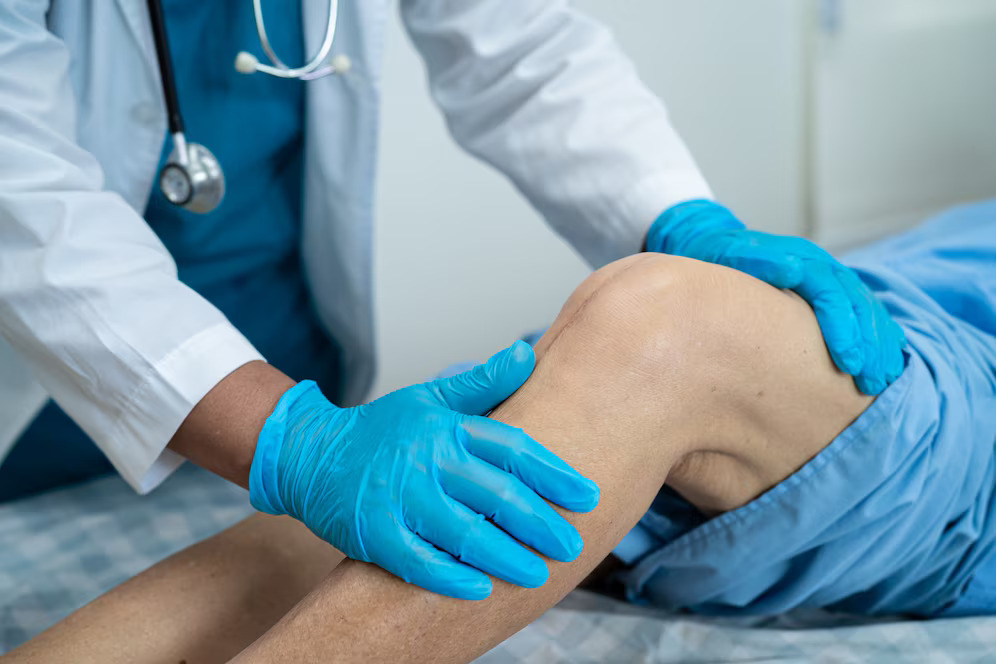Auto Injury and Meniscus Tear Surgery: Treatment and Recovery
Motor vehicle accidents can cause a variety of orthopedic injuries, with knee injuries being particularly common. The force and impact sustained during a car crash can lead to serious damage to the knee joint, including tears in the meniscus.

Understanding Meniscus Tears in the Context of Auto Injuries
The meniscus is a C-shaped piece of cartilage that acts as a cushion between the thigh bone (femur) and shinbone (tibia). Each knee has two menisci, and they play a crucial role in stabilizing the knee and distributing weight.
How Auto Injuries Cause Meniscus Tears
Auto accidents can result in meniscus tears through several mechanisms:
- Direct Impact: The knee may strike the dashboard or other interior structures of the vehicle.
- Twisting or Shearing Forces: Sudden stops or changes in direction can cause the knee to twist abnormally.
- Forceful Hyperextension or Hyperflexion: The violent motion of the body during a collision can overextend or overflex the knee joint.
- Combination of Factors: Often, it’s a combination of these forces that results in a meniscus tear.
Identifying a Meniscus Tear After an Auto Injury
It’s important to seek medical attention after an auto accident, even if you don’t feel immediate pain. Symptoms of a meniscus tear may not appear right away and can include:
- Pain, especially when twisting or rotating the knee
- Stiffness and swelling
- A “catching” or “locking” sensation in the knee
- Limited range of motion
- A popping sensation
Diagnosis and Evaluation
A thorough evaluation is essential to diagnose a meniscus tear accurately. This typically involves:
- Physical Examination: The doctor will examine your knee, checking for tenderness, swelling, and range of motion. Specific tests, such as the McMurray test, may be performed.
- Imaging Tests:
- X-rays: To rule out fractures or other bone injuries.
- MRI (Magnetic Resonance Imaging): Provides detailed images of the soft tissues of the knee, including the meniscus, to confirm the tear and determine its location and severity.
Treatment Options: When Is Surgery Necessary?
The treatment for a meniscus tear following an auto injury depends on several factors:
- Severity and Location of the Tear: Some tears may heal on their own, while others require surgical intervention.
- Patient’s Age and Activity Level: Younger, more active individuals may benefit more from surgery.
- Associated Injuries: The presence of other knee injuries, such as ligament tears, can influence treatment decisions.
Nonsurgical Treatment
For less severe tears, nonsurgical treatment options may include:
- Rest: Avoiding activities that aggravate the knee.
- Ice: Applying ice packs to reduce pain and swelling.
- Compression: Using a bandage to support the knee.
- Elevation: Keeping the leg raised to minimize swelling.
- Pain Medication: Over-the-counter or prescription pain relievers.
- Physical Therapy: Exercises to strengthen the muscles around the knee and improve stability.
Surgical Treatment: Meniscus Tear Surgery
Surgery is often recommended for severe tears, persistent symptoms, or when nonsurgical treatment is ineffective. The primary surgical procedure is knee arthroscopy.
- Knee Arthroscopy: A minimally invasive procedure in which a surgeon inserts a small camera and surgical instruments through tiny incisions to visualize and treat the tear.
- Partial Meniscectomy: The damaged portion of the meniscus is trimmed or removed.
- Meniscus Repair: The torn edges of the meniscus are stitched together. This is generally preferred for tears in the outer, well-vascularized region of the meniscus.
Recovery and Rehabilitation After Meniscus Tear Surgery
Rehabilitation is crucial for a successful recovery after surgery. The specific rehabilitation program will vary depending on the type of surgery performed.
Recovery After Meniscectomy
- Shorter recovery period compared to meniscus repair.
- Early weight-bearing is often allowed.
- Focus on regaining range of motion and strength.
Recovery After Meniscus Repair
- Longer recovery period to allow the meniscus to heal.
- Weight-bearing may be restricted initially.
- Emphasis on protecting the repair while gradually increasing knee function.
- Physical therapy is essential to restore strength, stability, and range of motion.
Potential Complications of Meniscus Tear Surgery
While generally safe, meniscus tear surgery can have potential complications, including:
- Infection
- Bleeding
- Stiffness
- Persistent pain
- Blood clots
- Nerve or blood vessel damage
- Failure of the repair to heal
Long-Term Outlook
The long-term outcome following meniscus tear surgery is generally good, especially with proper rehabilitation. However, the risk of developing osteoarthritis in the affected knee may be increased, particularly after a meniscectomy.
Conclusion
Auto injuries can significantly damage the knee, leading to meniscus tears that may require surgical intervention. Understanding the treatment options, including both non-surgical and surgical approaches, as well as the importance of post-operative rehabilitation, is crucial for optimizing recovery and long-term knee health.
Frequently Asked Questions (FAQs)
1. Can a meniscus tear from a car accident heal without surgery?
Small, stable tears, especially in the outer part of the meniscus, may heal with nonsurgical treatment.
2. What is the recovery time after meniscus tear surgery?
Recovery time varies. A meniscectomy typically has a shorter recovery (few weeks) than a meniscus repair (several months).
3. What are the long-term effects of a meniscus tear?
A meniscus tear can increase the risk of developing osteoarthritis in the affected knee over time.
4. How soon after surgery can I return to normal activities?
Return to activities depends on the surgery and individual healing. It may range from a few weeks to several months.
5. What is the success rate of meniscus repair surgery?
Success rates for meniscus repair are generally good, particularly for tears in the outer region of the meniscus and in younger patients.
Visit our website https://specialtycareclinics.com/auto-injury/ to learn more about knee injuries, treatment options, and recovery resources.
